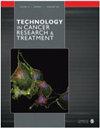Predictive Value of Peripheral Blood Eosinophil Count on the Efficacy of Treatment with Camrelizumab in Combination with Lenvatinib in Patients with Advanced Hepatitis B-Associated Hepatocellular Carcinoma
IF 2.7
4区 医学
Q3 ONCOLOGY
引用次数: 0
Abstract
Objective: To examine the effects of peripheral blood eosinophil (EOS) count and its dynamic alterations on the treatment efficacy and prognosis of patients with advanced hepatitis B virus-associated hepatocellular carcinoma (HBV-HCC) receiving camrelizumab combined with lenvatinib (C + L) therapy. Methods: A retrospective analysis was performed on 200 patients with advanced HBV-HCC who were admitted to two centers from January 2018 to August 2023 and treated with C + L. EOS, neutrophil-to-lymphocyte ratio (NLR), and platelet-to-lymphocyte ratio (PLR) were determined before C + L treatment (EOS0, NLR0, and PLR0) and after three cycles of treatment (EOS3, NLR3, and PLR3). The area under the curve was calculated using the receiver operating characteristic (ROC) curve. NLR and PLR served as references to analyze the effect of differences in EOS in predicting the survival efficacy of patients with HBV-HCC treated using C + L. The independent risk factors affecting progression-free survival (PFS) and overall survival (OS) were analyzed using univariate and multivariate Cox proportional risk models. Results: The ROC curve revealed that the predictive value of EOS3 was better than those of NLR3 and PLR3 for the long-term treatment efficacy of patients with intermediate and advanced HBV-HCC receiving C + L. Statistically significant differences were observed between groups with different levels of EOS0 and EOS3 and the evaluation of treatment efficacy after 3 weeks ( P < 0.05). The median PFS of the high-EOS0 group was higher than that of the low-EOS0 group ( P = 0.027); median PFS of the high EOS3 group was higher than that of the low EOS3 group ( P = 0.018); median OS of the high EOS0 group was higher than that of the low EOS0 group ( P = 0.032); median OS of the high EOS3 group was higher than that of the low EOS3 group ( P < 0.0001). Multifactorial Cox analysis revealed that EOS3 was an independent predictor of PFS and that EOS0 was an independent predictor of OS ( P < 0.05). Conclusion: EOS may be an ideal indicator for predicting the treatment efficacy and prognosis of patients with advanced HBV-HCC receiving C + L.外周血嗜酸性粒细胞计数对康瑞珠单抗联合乐伐替尼治疗晚期乙型肝炎相关肝细胞癌患者疗效的预测价值
目的研究外周血嗜酸性粒细胞(EOS)计数及其动态变化对接受康瑞珠单抗联合来伐替尼(C+L)治疗的晚期乙型肝炎病毒相关性肝细胞癌(HBV-HCC)患者疗效和预后的影响。研究方法在C+L治疗前(EOS0、NLR0和PLR0)和三个周期治疗后(EOS3、NLR3和PLR3)测定EOS、中性粒细胞与淋巴细胞比值(NLR)和血小板与淋巴细胞比值(PLR)。曲线下面积采用接收者操作特征曲线(ROC)计算。采用单变量和多变量考克斯比例风险模型分析了影响无进展生存期(PFS)和总生存期(OS)的独立风险因素。结果显示ROC曲线显示,EOS3对接受C+L治疗的中晚期HBV-HCC患者长期疗效的预测价值优于NLR3和PLR3。高EOS0组的中位PFS高于低EOS0组(P = 0.027);高EOS3组的中位PFS高于低EOS3组(P = 0.018);高EOS0组的中位OS高于低EOS0组(P = 0.032);高EOS3组的中位OS高于低EOS3组(P <0.0001)。多因素 Cox 分析显示,EOS3 是 PFS 的独立预测因子,EOS0 是 OS 的独立预测因子(P < 0.05)。结论EOS可能是预测接受C+L治疗的晚期HBV-HCC患者疗效和预后的理想指标。
本文章由计算机程序翻译,如有差异,请以英文原文为准。
求助全文
约1分钟内获得全文
求助全文
来源期刊
CiteScore
4.40
自引率
0.00%
发文量
202
审稿时长
2 months
期刊介绍:
Technology in Cancer Research & Treatment (TCRT) is a JCR-ranked, broad-spectrum, open access, peer-reviewed publication whose aim is to provide researchers and clinicians with a platform to share and discuss developments in the prevention, diagnosis, treatment, and monitoring of cancer.

 求助内容:
求助内容: 应助结果提醒方式:
应助结果提醒方式:


